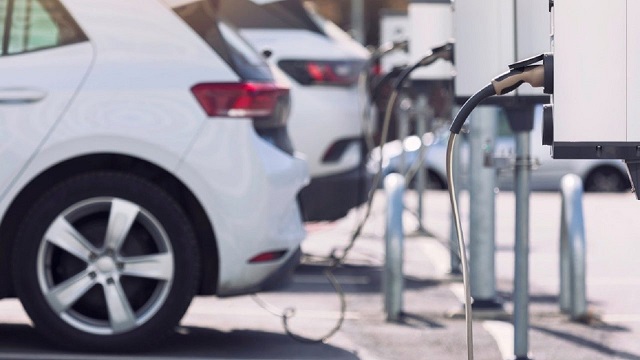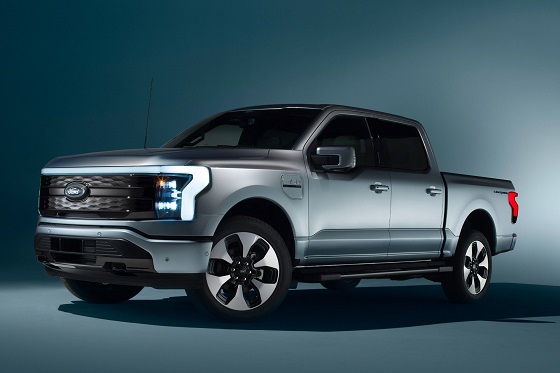Automotive
Do Electric Vehicle Subsidies Work?

From The Audit
Governments in Canada have been begging us to purchase EVs and plug-in hybrids for years. The carrot has been $600 million annually in federal subsidies (and more at the provincial level) aimed at consumers. The stick is the dark threat of outlawing internal combustion engines altogether. A third approach involves splashing billions of dollars of handouts and tax credits in the general direction of companies with starry-eyed plans to manufacture EV components locally.
I’m not going to discuss whether EVs are actually the best solution for whatever ails the environment. That may be a few levels above my pay grade. Instead, I’d like to analyze whether the consumer-focused subsidies actually worked.
To do that I first identified the provinces that offered subsidies for “battery electric vehicles” (i.e., EVs). Those would be British Columbia, Quebec, New Brunswick, Prince Edward Island, Nova Scotia, and Newfoundland. That’ll give us a nice reference point for comparison against provinces that don’t offer subsidies. Specifically, those are Alberta, Saskatchewan, Manitoba, and Ontario. (Although Manitoba did just introduce a rebate program in July of 2024.)
Of course, there are also federal subsidies available across the country.
Now there is one problem with the Statistics Canada sales data. Due to some weird licensing issue, there’s no sales data at all for Newfoundland, Nova Scotia, or Alberta. We’ll just have to do our best with what we’ve got.
Here are the numbers expressed as sales per 100,000 people (based on 2024 provincial population estimates):

The obvious big mover here is Quebec. Their Roulez Vert program – at $7,000 – is the most generous in the country (although it’s currently set to be phased-out by 2027). But Roulez Vert has been around since 2012, so it might not completely explain those huge jumps since 2022.
If you squint really hard at the graph, you should notice a modest jump in Ontario EV sales back in 2018. That would probably be due to last-minute bargain hunters reacting to the Ford government’s plans to cancel Ontario’s rebate.
But none of that is going to give us the precision we need to answer our real question: did government subsidies actually drive more EV sales? For that, we’ll need a bit of statistical analysis. This scatter plot visualizes the relationships between subsidies and average sales over time:

If our only data point was Quebec – with its impressive sales and high subsidy level – then the conclusion would be straightforward. But that’s exactly why we look for more data. So, for instance, BC has sales that, proportionally, were close to Quebec’s but with rebates that were 40 percent lower. And Canada’s federal rebates played a role in relatively few overall sales.
For those of you who enjoy such things, here are the actual numbers SciPy’s linear regression gave me:
Slope: 0.005910745672259122 Intercept: 13.256019105900187 R-squared: 0.31881294222441453 P-value: 0.14480378835260208 Standard Error: 0.00352721449117312
The slope indicates that for every additional thousand dollars of subsidy, EV sales would increase by only around six vehicles per 100,000 people. That’s compared with the intercept (13.26) which estimates the baseline (no-subsidy) sales at 13.26 units per 100,000 people.
The R-squared value suggests that about 32 percent of the variability in EV sales per 100,000 people is explained by the subsidy amount. But the P-value strongly suggests that the relationship is not statistically significant.
Meaning, in other words, that there’s no clear cause-and-effect relationship between the billions of dollars of government handouts and real-world vehicle sales. It’s distinctly possible that just as many EVs would have been purchased had there been no subsidies.
Automotive
Politicians should be honest about environmental pros and cons of electric vehicles

From the Fraser Institute
By Annika Segelhorst and Elmira Aliakbari
According to Steven Guilbeault, former environment minister under Justin Trudeau and former member of Prime Minister Carney’s cabinet, “Switching to an electric vehicle is one of the most impactful things Canadians can do to help fight climate change.”
And the Carney government has only paused Trudeau’s electric vehicle (EV) sales mandate to conduct a “review” of the policy, despite industry pressure to scrap the policy altogether.
So clearly, according to policymakers in Ottawa, EVs are essentially “zero emission” and thus good for environment.
But is that true?
Clearly, EVs have some environmental advantages over traditional gasoline-powered vehicles. Unlike cars with engines that directly burn fossil fuels, EVs do not produce tailpipe emissions of pollutants such as nitrogen dioxide and carbon monoxide, and do not release greenhouse gases (GHGs) such as carbon dioxide. These benefits are real. But when you consider the entire lifecycle of an EV, the picture becomes much more complicated.
Unlike traditional gasoline-powered vehicles, battery-powered EVs and plug-in hybrids generate most of their GHG emissions before the vehicles roll off the assembly line. Compared with conventional gas-powered cars, EVs typically require more fossil fuel energy to manufacture, largely because to produce EVs batteries, producers require a variety of mined materials including cobalt, graphite, lithium, manganese and nickel, which all take lots of energy to extract and process. Once these raw materials are mined, processed and transported across often vast distances to manufacturing sites, they must be assembled into battery packs. Consequently, the manufacturing process of an EV—from the initial mining of materials to final assembly—produces twice the quantity of GHGs (on average) as the manufacturing process for a comparable gas-powered car.
Once an EV is on the road, its carbon footprint depends on how the electricity used to charge its battery is generated. According to a report from the Canada Energy Regulator (the federal agency responsible for overseeing oil, gas and electric utilities), in British Columbia, Manitoba, Quebec and Ontario, electricity is largely produced from low- or even zero-carbon sources such as hydro, so EVs in these provinces have a low level of “indirect” emissions.
However, in other provinces—particularly Alberta, Saskatchewan and Nova Scotia—electricity generation is more heavily reliant on fossil fuels such as coal and natural gas, so EVs produce much higher indirect emissions. And according to research from the University of Toronto, in coal-dependent U.S. states such as West Virginia, an EV can emit about 6 per cent more GHG emissions over its entire lifetime—from initial mining, manufacturing and charging to eventual disposal—than a gas-powered vehicle of the same size. This means that in regions with especially coal-dependent energy grids, EVs could impose more climate costs than benefits. Put simply, for an EV to help meaningfully reduce emissions while on the road, its electricity must come from low-carbon electricity sources—something that does not happen in certain areas of Canada and the United States.
Finally, even after an EV is off the road, it continues to produce emissions, mainly because of the battery. EV batteries contain components that are energy-intensive to extract but also notoriously challenging to recycle. While EV battery recycling technologies are still emerging, approximately 5 per cent of lithium-ion batteries, which are commonly used in EVs, are actually recycled worldwide. This means that most new EVs feature batteries with no recycled components—further weakening the environmental benefit of EVs.
So what’s the final analysis? The technology continues to evolve and therefore the calculations will continue to change. But right now, while electric vehicles clearly help reduce tailpipe emissions, they’re not necessarily “zero emission” vehicles. And after you consider the full lifecycle—manufacturing, charging, scrapping—a more accurate picture of their environmental impact comes into view.
Automotive
Ford’s EV Fiasco Fallout Hits Hard


From the Daily Caller News Foundation
I’ve written frequently here in recent years about the financial fiasco that has hit Ford Motor Company and other big U.S. carmakers who made the fateful decision to go in whole hog in 2021 to feed at the federal subsidy trough wrought on the U.S. economy by the Joe Biden autopen presidency. It was crony capitalism writ large, federal rent seeking on the grandest scale in U.S. history, and only now are the chickens coming home to roost.
Ford announced on Monday that it will be forced to take $19.5 billion in special charges as its management team embarks on a corporate reorganization in a desperate attempt to unwind the financial carnage caused by its failed strategies and investments in the electric vehicles space since 2022.
Cancelled is the Ford F-150 Lightning, the full-size electric pickup that few could afford and fewer wanted to buy, along with planned introductions of a second pricey pickup and fully electric vans and commercial vehicles. Ford will apparently keep making its costly Mustang Mach-E EV while adjusting the car’s features and price to try to make it more competitive. There will be a shift to making more hybrid models and introducing new lines of cheaper EVs and what the company calls “extended range electric vehicles,” or EREVs, which attach a gas-fueled generator to recharge the EV batteries while the car is being driven.
Dear Readers:
As a nonprofit, we are dependent on the generosity of our readers.
Please consider making a small donation of any amount here.
Thank you!
“The $50k, $60k, $70k EVs just weren’t selling; We’re following customers to where the market is,” Farley said. “We’re going to build up our whole lineup of hybrids. It’s gonna be better for the company’s profitability, shareholders and a lot of new American jobs. These really expensive $70k electric trucks, as much as I love the product, they didn’t make sense. But an EREV that goes 700 miles on a tank of gas, for 90% of the time is all-electric, that EREV is a better solution for a Lightning than the current all-electric Lightning.”
It all makes sense to Mr. Farley, but one wonders how much longer the company’s investors will tolerate his presence atop the corporate management pyramid if the company’s financial fortunes don’t turn around fast.
To Ford’s and Farley’s credit, the company has, unlike some of its competitors (GM, for example), been quite transparent in publicly revealing the massive losses it has accumulated in its EV projects since 2022. The company has reported its EV enterprise as a separate business unit called Model-E on its financial filings, enabling everyone to witness its somewhat amazing escalating EV-related losses since 2022:
• 2022 – Net loss of $2.2 billion
• 2023 – Net loss of $4.7 billion
• 2024 – Net loss of $5.1 billion
Add in the company’s $3.6 billion in losses recorded across the first three quarters of 2025, and you arrive at a total of $15.6 billion net losses on EV-related projects and processes in less than four calendar years. Add to that the financial carnage detailed in Monday’s announcement and the damage from the company’s financial electric boogaloo escalates to well above $30 billion with Q4 2025’s damage still to be added to the total.
Ford and Farley have benefited from the fact that the company’s lineup of gas-and-diesel powered cars have remained strongly profitable, resulting in overall corporate profits each year despite the huge EV-related losses. It is also fair to point out that all car companies were under heavy pressure from the Biden government to either produce battery electric vehicles or be penalized by onerous federal regulations.
Now, with the Trump administration rescinding Biden’s harsh mandates and canceling the absurdly unattainable fleet mileage requirements, Ford and other companies will be free to make cars Americans actually want to buy. Better late than never, as they say, but the financial fallout from it all is likely just beginning to be made public.
- David Blackmon is an energy writer and consultant based in Texas. He spent 40 years in the oil and gas business, where he specialized in public policy and communications.
-

 Censorship Industrial Complex15 hours ago
Censorship Industrial Complex15 hours agoDeath by a thousand clicks – government censorship of Canada’s internet
-

 Automotive20 hours ago
Automotive20 hours agoPoliticians should be honest about environmental pros and cons of electric vehicles
-

 Great Reset18 hours ago
Great Reset18 hours agoViral TikTok video shows 7-year-old cuddling great-grandfather before he’s euthanized
-

 Daily Caller16 hours ago
Daily Caller16 hours agoChinese Billionaire Tried To Build US-Born Baby Empire As Overseas Elites Turn To American Surrogates
-

 Alberta17 hours ago
Alberta17 hours agoSchools should go back to basics to mitigate effects of AI
-

 Daily Caller2 days ago
Daily Caller2 days ago‘Almost Sounds Made Up’: Jeffrey Epstein Was Bill Clinton Plus-One At Moroccan King’s Wedding, Per Report
-

 Crime2 days ago
Crime2 days agoBrown University shooter dead of apparent self-inflicted gunshot wound
-

 Bruce Dowbiggin1 day ago
Bruce Dowbiggin1 day agoHunting Poilievre Covers For Upcoming Demographic Collapse After Boomers





